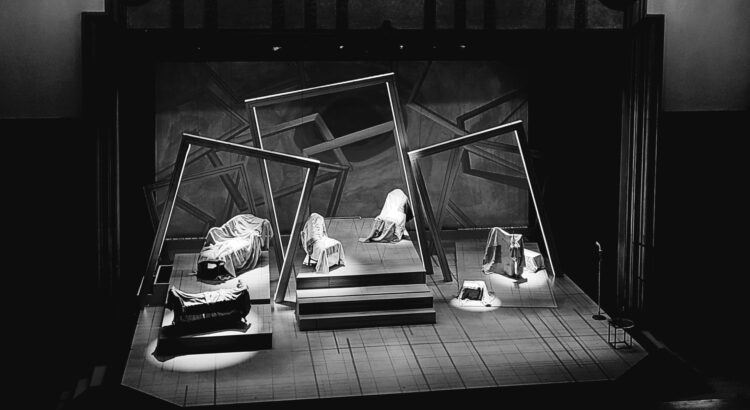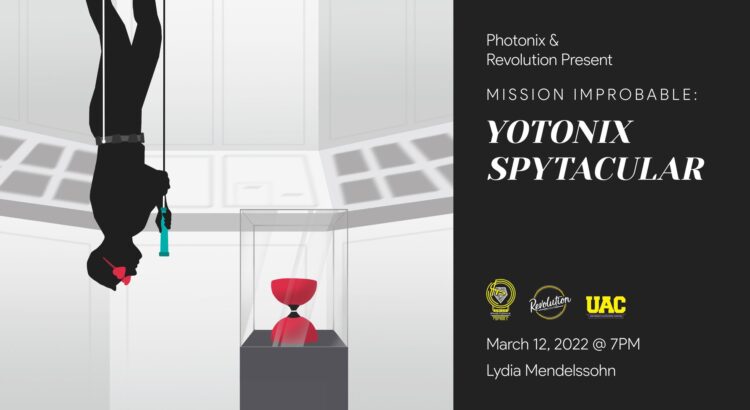Photos are provided by Peter Smith Photography
From October 10 to 13, the School of Music, Theatre, & Dance presented a musical adaptation of William Shakespeare’s Twelfth Night. The witty script combined with the students’ incredible singing and dancing made it such an enjoyable experience that I ended up watching it twice.
The performance took place in the Lydia Mendelssohn Theatre, which although a little small, is actually my favorite venue for musicals. The charming, comfortable velvet seats and the excellent acoustics ensure that every line and lyric is crystal clear. The actors also make creative use of the entire space by entering and exiting through aisles and side doors instead of always walking backstage, and this added interaction with the audience made the show feel all the more immersive. The set design for Illyria, a mythical city surrounded by water, was stunning: the intricate details of the staircase, balcony, and guardrails added realism, while the bright colors and decorations created a whimsical atmosphere.
The first musical number that stood out to me was “If You Were My Beloved,” performed by Viola, Olivia, and Orsino. Viola’s youthful, endearing voice accidentally captures Olivia’s heart, embodying the innocence and purity of the kind of love Olivia has been longing for. Olivia’s bright and powerful voice conveys the excitement of newfound love, radiating optimism and hope for her future romantic pursuits. Lastly, Orsino’s deep, charismatic voice reflects the depth of his persistent and long-held admiration for Olivia. Despite their conflicting interests while singing these lyrics, the trio harmonizes beautifully, hinting at the tangled and humorous love triangle filled with misunderstandings and unexpected twists.
Another memorable number was “Is This Not Love?” Feste’s soulful tone beautifully captured the yearning and frustration that come with being in love. This exasperation was further amplified through the choreography where Viola and Orsino would reach out for each other without ever fully connecting, underscoring the emotional distance between them. A particularly powerful moment featured Orsino spinning Viola in the air; despite their physical closeness, their emotions remained unspoken.
Funnily enough, it was “Count Malvolio” that left the deepest impression on me. I loved the playful costumes of the backup dancers that mirrored Malvolio’s outfit, and their addition allowed for a grand choreography filled with silly gestures that perfectly captured Malvolio’s ambitious dream of becoming a count. With its humorous lyrics and catchy chorus, I found myself singing it for days afterward.
Overall, each musical number was a joy to experience, and I left the theater excited to listen to them again. However, I found myself disappointed with the recordings I found online, since they lacked the vibrancy and emotional depth that made the live performances so special.
Watching the show from two different perspectives—the main floor the first time and the balcony the second—provided me with more ways to experience the performance. From the balcony, I could appreciate the full scope of the choreography, from the various formations to the synchronization. On the main floor, however, the experience felt more cinematic; the singing was more immersive and the actors’ facial expressions brought the romantic tension and developments to life. Honestly, if given the opportunity, I would happily go back to watch the musical a third time and re-experience the beauty of Illyria once more with SMTD.










